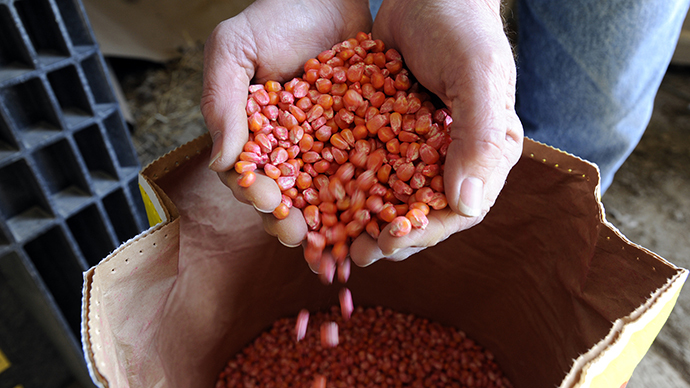USDA goes forward with herbicide-resistant GMO seeds

The commercial use of new herbicide-resistant, genetically modified corn and soybean seeds moved one step closer to reality on Friday when the United States Department of Agriculture announced their introduction in limited quantities.
The new seeds have been genetically engineered by Dow AgroSciences to survive the hefty application of 2,4-D, a widely used weed killer that’s commonly known as one of the ingredients in the Vietnam War-era herbicide Agent Orange.
According to a report by the USDA’s Animal and Plant Health Inspection Service, these modified seeds will be used in restricted field trials while the agency continues to evaluate the possibility that it will deregulate the product altogether, despite concerns regarding a surge in herbicide use.
Last May, government officials delayed the approval of the new crops until they had conducted new environmental impact statements (EIS). In addition to the APHIS report, a separate review is currently underway by the Environmental Protection Agency with the goal of determining the consequences of extensive 2,4-D use that’s likely to occur should the seeds come to market.
Although the EPA review should be released sometime over the next few months, it’s unclear when exactly the final rulings on the herbicide and the seeds will be made. If approved, farmers would be able to plant the new seeds while spraying fields with 2,4-D throughout the life of the crops, which in their current variation are still susceptible to the herbicide.
According to the Associated Press, scientists don’t believe 2,4-D to be responsible for health complications caused by Agent Orange, and have instead pinpointed the ingredient 2,4,5-T – banned by the EPA in 1985 – as the culprit. Previous findings by the EPA have also declared the weed killer safe to use, but other groups aren’t as confident.
As RT reported in the past, the Natural Resources Defense Council has linked 2,4-D to cases of cancer, genetic mutations and more. In addition the impact on humans, the Save Our Crops Coalition believes it will be extremely difficult to contain the application of the herbicide to a particular area.
“These herbicides have been known to drift and volatilize to cause damage to plants over ten miles away from the point of application,” the coalition claimed.
Meanwhile, there is also concern that expanding the use of 2,4-D would simply speed up the evolution of weeds resistant to the chemical. The herbicide is already the third most-used weed killer in the US, but the AHPIS deflected this argument by saying resistance could happen anyway. The agency recommended attempts to slow down the evolution of 2,4-D resistant weeds by using a combination of techniques to fight their growth and not simply relying on the herbicide.














